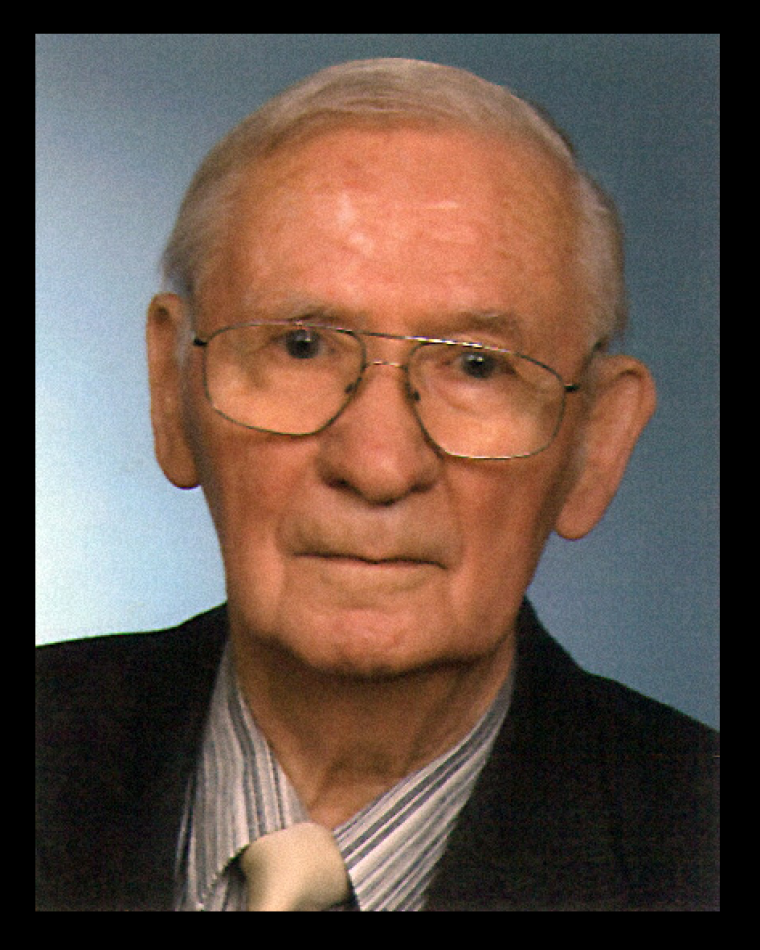
Hans Hillman
Hans Hillman
Contact Menu
Hans HIllmann Remembered
September 10, 2014 (PO35). Hans Hillmann, a prominent superconducting materials scientist and consummate artist, passed away on February 6, 2014, at almost 92. He was born on February 15, 1922 in Ronneburg, Thuringia, Germany. Shortly after WW II, he started his career initially as a teacher of art, mathematics and physics (1946-1956), while nearly simultaneously studying physics as an extern at the Technical University of Dresden, Saxony, Germany (1952-1957). Upon graduating with a diploma, he became there a Scientific Assistant at the Institute for X-Ray Science and Metal Physics.
In 1959 Hans successfully moved from East Germany to the West and immediately got hired by Vacuumschmelze GmbH (VAC) in Hanau, West Germany, to work in their R&D laboratory.VAC was then a prominent manufacturer of high quality specialty metals and alloys, especially soft magnetic alloys. Shortly thereafter, in 1961, Gene Kunzler of Bell Labs demonstrated high critical current at 8 tesla in Nb3Sn and the first worldwide “gold rush” into fabricating superconducting wires of more ductile alloys began, first of NbZr soon superseded by NbTi. Naturally, Vacuumschmelze joined the fray and so Hans got involved into superconductivity of materials and conductors, over the years making and publishing multiple important contributions to the science and technology of NbZr, NbTi and Nb3Sn. He worked on these over the rest of his scientific career. Nevertheless, the breadth of his interest and the experience with difficult to process NbZr led Hans to contribute also in other areas.
As an example can serve - developed by him - the first nonmagnetic watch springs with temperature-independent E modulus, which found application in expensive mechanical watches. Soon after, the technology of such springs fell in oblivion due to the rapid spread of quartz watches. Only decades later, with Hans long retired, very expensive mechanical watches had their renaissance and Swiss manufacturers were desperate to find a source of appropriate springs. Hans was the only remaining repository of spring know-how. He faced the challenge, jumped into action and reconstituted the technology. Today, a very expensive Swiss watch is likely to contain a spring "Made by Hans Hillmann".
In 1974 he defended his doctoral dissertation on "Micro-Structural Principles of Flux Pinning in NbTi" with Prof. W. Buckel as advisor at the Technical University of Karlsruhe, and in the same year was awarded the prestigious Tammann Medal by the German Metallurgy Society. That award was for his pioneering work in the field of hard (Type II) superconductors. Hans retired in 1988, but continued publishing and consulting while simultaneously pursuing his artistic activities as painter and exhibitor at art galleries and museums.
Most remarkable was Hans’s gift to be able to see any problem as a whole with all its ramifications and extrapolations into the future. He participated in many European projects and toward the end of his career he was responsible for all the superconducting R&D activity at VAC. During the more than 26 years of his work in this area, his main focus - next to performing basic research on high-current and high-field superconductor technology - was to transform laboratory results into technically usable NbTi and Nb3Sn commercial products. He contributed largely to the early stages of industrial manufacturing of superconductors at VAC. Particularly vital was his insistence on understanding technical superconductors in the complex nanostructured forms in which they had to be used. He was a delightful colleague, not at all narrow-minded in any commercial sense, because he always seemed motivated by the belief that better superconductors would increase the market for all. This spirit certainly made VAC one of the leading companies worldwide, a situation still true today decades after his retirement when it is now owned by Bruker EAS, but still at Hanau, Germany.
Hans’s art gene was nurtured by his early professional activity of math, physics and art teacher, as documented by his exceptional drawings and sketches of experimental equipment. The esthetics of mathematics and superconductor physics was visualized in his multiple paintings inspired by images of physical effects.
Hans has been an exceptional personality in the superconductivity community. To have him among us was a special gift. We’ll cherish his memory.
Colleagues and friends at Bruker, David Larbalestier at NHMFL and Alex Braginski at Research Center Juelich